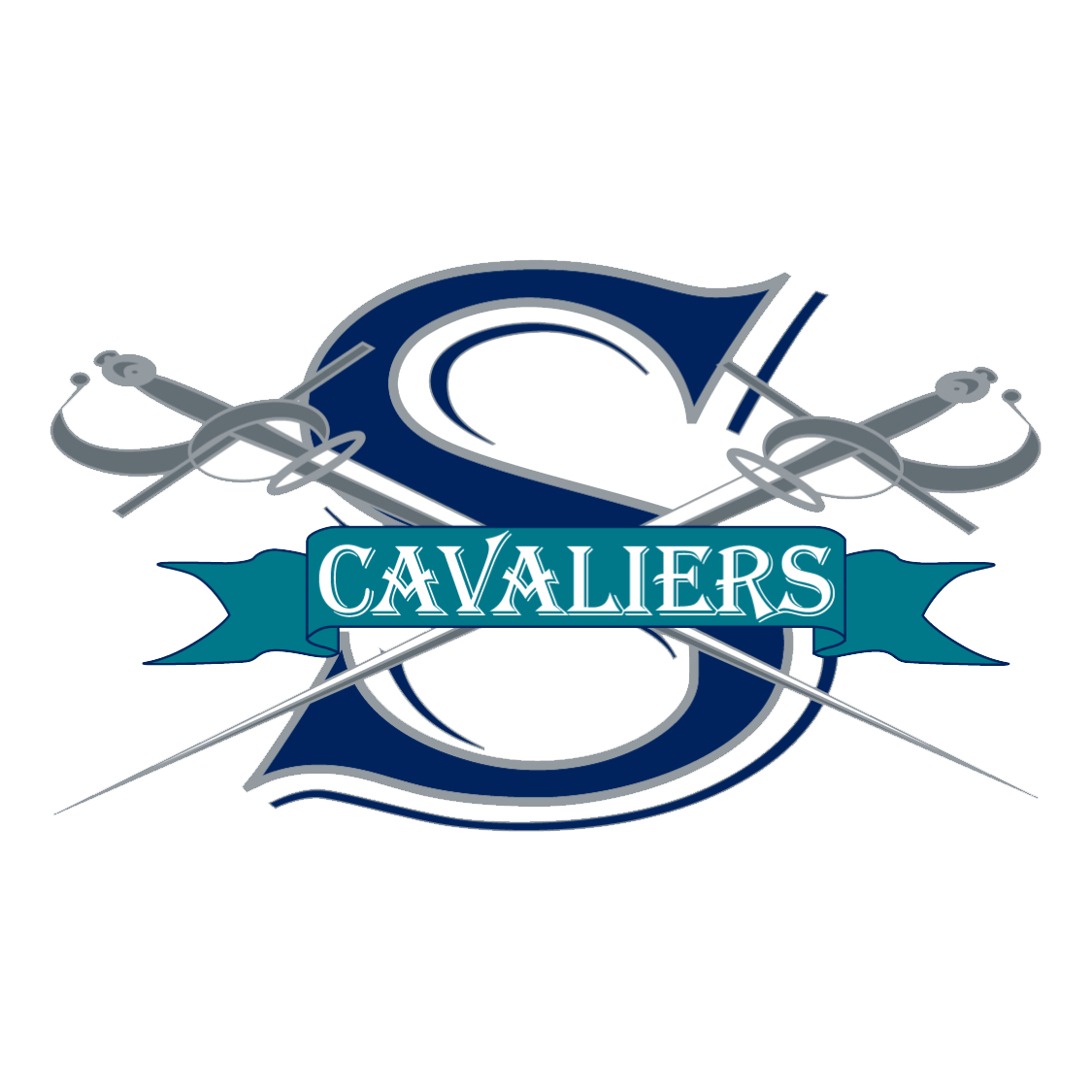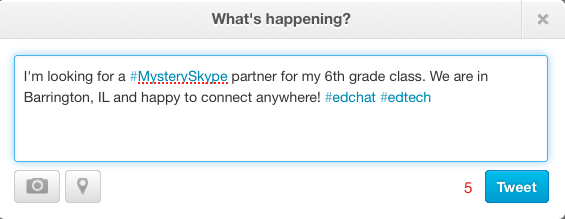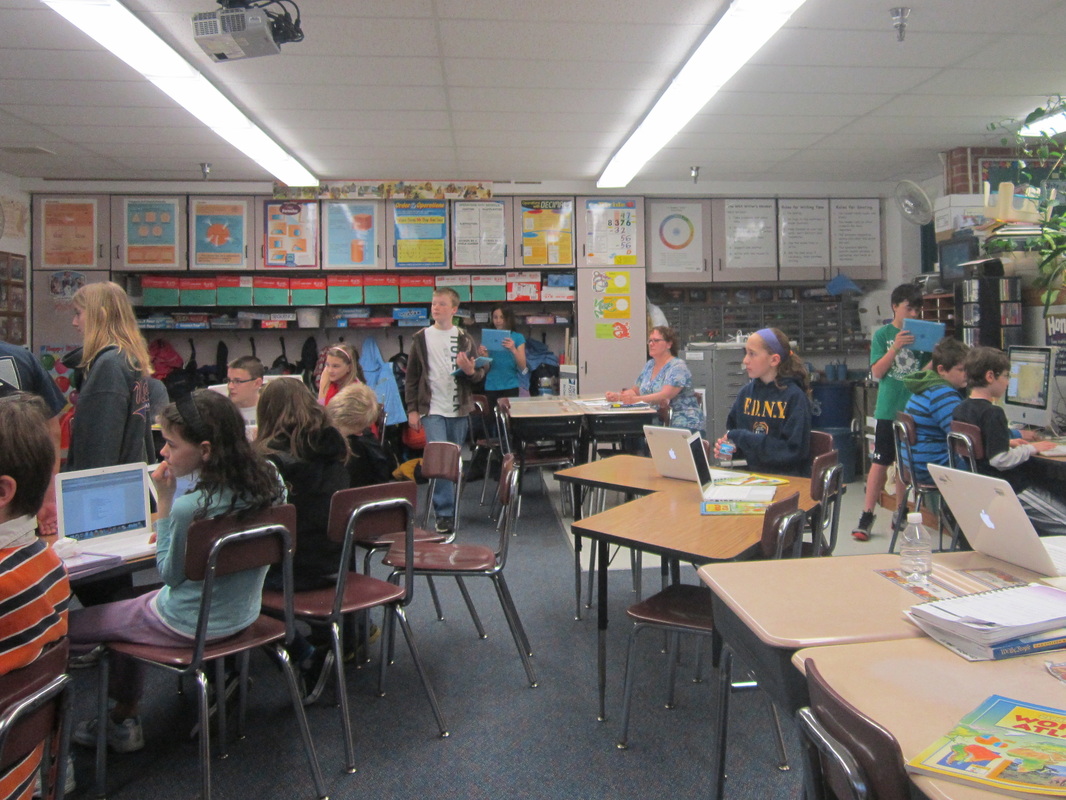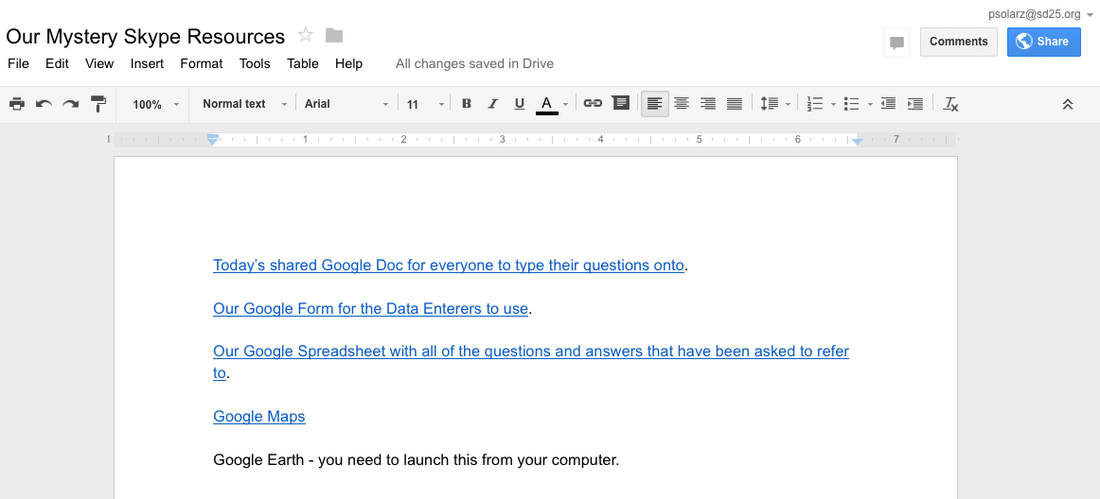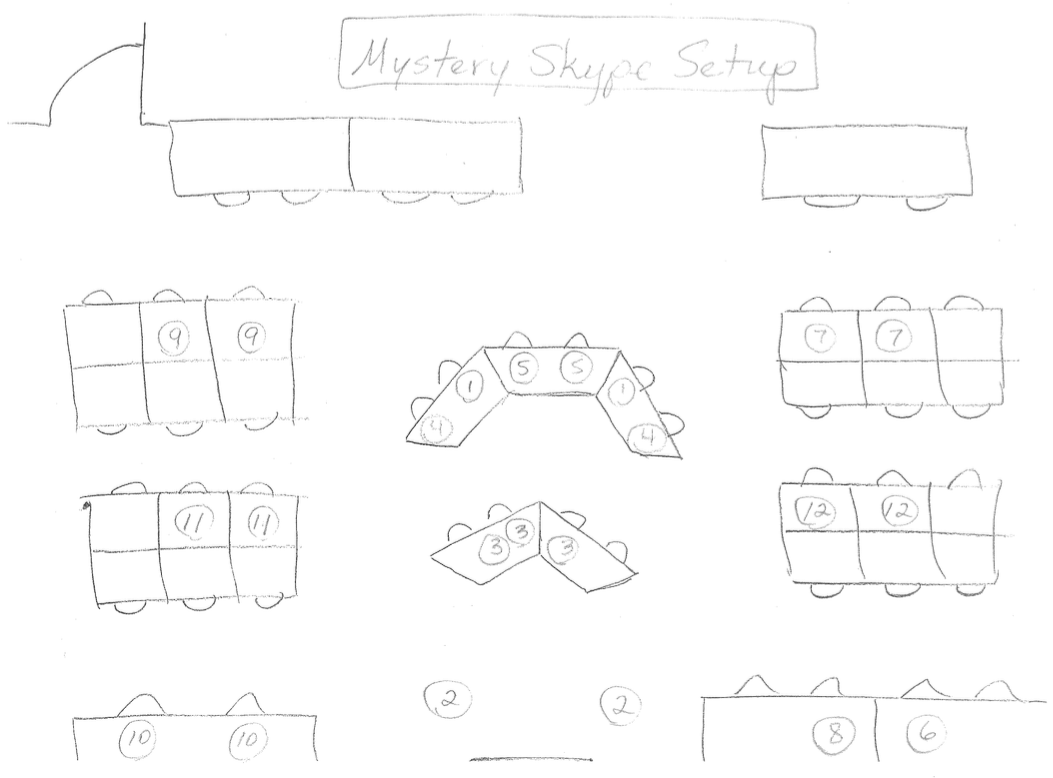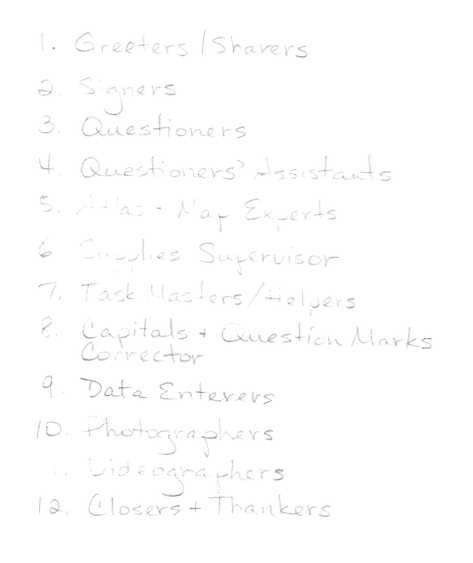Mystery Skype
Mystery Skype Introduction: https://education.microsoft.com/skype-in-the-classroom/gonoodleskype
Mystery Skype is a 45-60 minute critical thinking challenge that your class takes part in while Skyping with another class somewhere else in the world. Your students' goal is to guess the other school's location (country, state, city, school name) before they guess yours. We do this by asking yes and no questions.
Here is a more thorough explanation of Mystery Skype from Skype in the Classroom:https://education.skype.com/mysteryskype/how-it-works
Here is a more thorough explanation of Mystery Skype from Skype in the Classroom:https://education.skype.com/mysteryskype/how-it-works
How do you find Mystery Skype partners?
There are lots of ways of finding partners for Mystery Skyping! One way is to connect with teachers that you collaborate with outside of your district. Another is to use Twitter. Send out a tweet that looks something like this and you are sure to get some takers (the hashtags I included are helpful and increase the number of people who will see your tweet):
Skype in the Classroom has worked hard to make this process easier on teachers. They've now created a Mystery Skype page where you can find other teachers around the world who are interested in Mystery Skyping by registering on this page:https://education.skype.com/mysteryskype
Why should I have my students Mystery Skype?
|
Reasons to do Mystery Skypes:
|
How do I start?
1. Before your first Mystery Skype, teach your students how to ask general questions (as opposed to specific questions). We do this by playing a mystery game where a situation was presented and the students had to ask Yes or No questions to try to solve the mystery. As they asked questions, I helped them refine their questions to be general to start and get more specific as they narrow in on a correct answer. When students ask "specific" questions too soon, it's often a waste of a question.
|
Good examples of General Questions:
Poor examples (These questions are too specific):
|
2. It is best to create a web page or a shared Google Doc (see image below #3) that has all of the links your students will need prior to your first Mystery Skype. You may also want to show them one of the clips from our Mystery Skype YouTube Playlist (these are raw videos, so preview them ahead of time to decide which one might be best).
|
You will need to link to:
|
3. Show your students the documents and websites they will be using during each Mystery Skype. Also, make sure they know how to use an atlas (or one online).
4. When your students understand how to ask general questions and know the resources they will need to use, teach them the roles that you will be using during your first Mystery Skype. (Don't assign any of them yet, though.)
|
Here are the jobs that I use:
|
5. Schedule your first Mystery Skype for a date in the near future. A couple days prior to the actual Mystery Skype, do a practice one together. Here's how I do that:
|
6. You're ready for your first Mystery Skype! Have your students take their positions. Go through each step, and when you get to the Question and Answer portion, take turns with the other class!
Hints & Suggestions:
- Start very generally (e.g. Are you in North America? Are you north of the 40th parallel? etc.).
- Some classes like to give you a free follow-up question if they answered, "Yes" to your question, but it's limited to one follow-up per turn.
- As questions and answers are being exchanged, make sure that everyone is contributing to the Google Doc and that no one is shouting their questions across the classroom!
- Despite all the preparation, there will probably be some hiccups, but don't worry because you are being a risk-taker and that's great to model for your students!
- Have students try to stay on their train of thought unless they feel like it was a poor question to begin with! For example, Do you live within a 65 mile radius of Chicago? Do you live within a 40 mile radius of Chicago? Do you live within a 25 mile radius of Chicago?
- Creating a Google Doc that everyone has access to is a must! Everyone researching can suggest questions for the "Questioners." The Questioners can choose between everyone's ideas to pick the best one each time. No need for shouting out or competing for the next question!
- Have students turn shirts inside-out if they have the school name on them (or sports teams, etc.).
- Make sure the Sharers and Greeters never say the name of the school or city or state in their comments.
- The teachers should call each other Mr. S instead of Mr. Solarz to prevent students from looking up a teacher's name online.
- When Skype is opened, the name of the caller is prominently displayed. It would be best to slide the window to the left so that the name is hidden.
- A day or two before the scheduled Mystery Skype, be sure to add the other teacher as a contact in Skype. If possible, have a quick practice call with them.
- Make sure that your scheduled time is taking into account time zone differences. I always say, "Central Time Zone" after the time when I schedule, even if they are in our time zone.
For more information, feel free to check out these sites:
- http://psolarz.weebly.com/becoming-a-global-classroom-through-mystery-skypes.html
- http://psolarz.weebly.com/mystery-skype.html
- https://www.youtube.com/watch?v=aI3sVBFDHGQ
- http://psolarz.weebly.com/our-learning-experiences/mystery-skype-annie
- http://paulsolarz.weebly.com/our-learning-experiences/mystery-skypes
- http://paulsolarz.weebly.com/miscellaneous/mystery-skype-directions
- http://blogs.skype.com/2013/02/15/whats-the-hype-with-mystery-skype/#fbid=QEEBTcSeVh1
- http://comfortably20.blogspot.com/2012/01/when-are-we-gonna-do-that-again.html
- http://yollisclassblog.blogspot.com/2011/06/mystery-skype-call-with-langwitches.html
- http://mravery.edublogs.org/2011/06/14/mystery/
- https://sites.google.com/site/moreseedstosuccesswithskype/02-skype-jobs-video-and-chart
- http://pernillesripp.com/2013/08/08/mystery-skype-jobs-created-by-my-student
